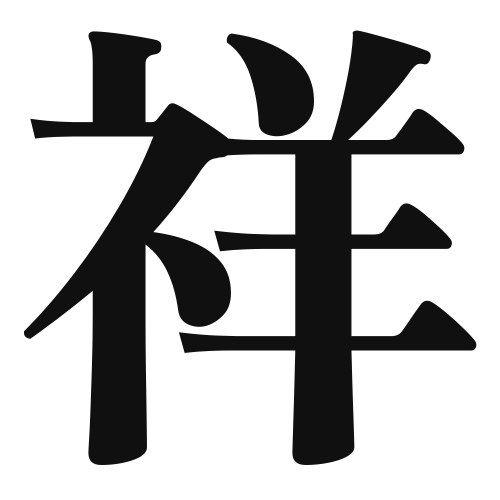1. Overview of Meaning
The kanji “祥” (shou) generally means “auspicious” or “good omen.” It is often associated with positive events and good fortune in various contexts.
2. Formation and Radical
Formation of the Kanji: The kanji “祥” is a phonetic-ideographic character (形声文字), which combines a meaning component and a sound component. The left part, “羊” (sheep), suggests a connection to auspiciousness, as sheep are often seen as gentle and beneficial animals in many cultures.
Radical: The radical of “祥” is “羊” (sheep), which is commonly associated with peace and prosperity.
3. Examples of Usage
Common Words and Phrases: Some frequently used words that include “祥” are “祥和” (shouwa – harmony) and “吉祥” (kicchou – auspiciousness).
Example Sentences in Daily Conversation:
- 「このお祭りは祥和な雰囲気でいっぱいです。」(This festival is filled with an auspicious atmosphere.)
- 「彼の成功は本当に吉祥な出来事です。」(His success is truly an auspicious event.)
4. Synonyms and Antonyms
Similar Kanji: A similar kanji is “福” (fuku), which means “happiness” or “blessing.” While both “祥” and “福” relate to positive outcomes, “祥” specifically refers to auspicious signs, whereas “福” emphasizes the state of being blessed or fortunate.
Opposite Kanji: An antonym of “祥” is “凶” (kyou), which means “ominous” or “bad luck.” This kanji represents negative events or misfortunes.
5. Cultural and Historical Background
Relation to Japanese Culture: In Japanese culture, “祥” is often used in contexts related to celebrations, such as weddings and festivals, where auspiciousness is desired. It reflects the cultural importance placed on good fortune and positive beginnings.
Proverbs and Idioms: One common saying is “吉祥如意” (kicchou nyoi), which translates to “may your wishes come true,” emphasizing the desire for auspicious outcomes in life.
